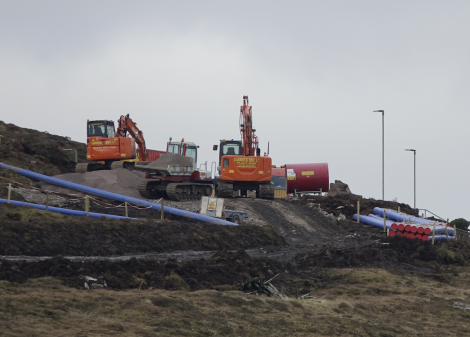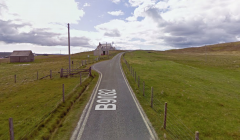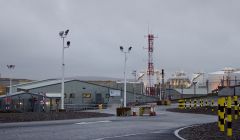Council / New social houses a priority as only 16 built last year
SHETLAND must press ahead with major housing developments at the Staney Hill and the Knab, a council committee heard, after only 16 social houses were completed last year.
Members of the development committee on Monday were dismayed at the lack of house building, which was the black cloud in an otherwise positive picture contained in a development plan for the next three years.
Aside from water pipes being laid, Hjaltland Housing Association’s Staney Hill development had seen little concrete progress in the past 12 months.
Committee chairman Alastair Cooper said that the development plan was essentially “setting the agenda” for the next council’s work programme as well as being the legacy of the sitting council.
Social housing was part of a web of services needed to attract new blood to the isles in the face of a steadily declining population, the committee heard.
Cooper was one of a number of councillors to highlight the lack of new builds and the apparent lack of progress at Staney Hill, which has been slated for about 300 social houses plus private developments.
He said: “The thing that disappoints me is the low number of social housing completions. It is as low as has been for a long, long time.”
The committee heard that momentum should not be lost in developing the Knab site, which may have about half the number of houses as Staney Hill, and has seen a welcome degree of community engagement in drawing up the masterplan so far.
Councillors also heard of the difficulty in recruiting skilled people to live in the isles and of the need to discuss how best to go about that with the likes of Enquest and Total who operate the oil and gas terminals respectively.
The hard-pressed planning department, meanwhile, has been successful in boosting its numbers following a targeted recruitment drive that could be a pilot for other council departments.
Become a member of Shetland News
But the prospect of Brexit has already harmed recruitment of EU nationals as well as putting a multi-million pound hole in project funding, development director Neil Grant said later.
According to Grant there would be a “hiatus” while successful EU funded schemes like Leader were wound up. Meanwhile, Westminster funded replacement schemes were not even fleshed out.
This meant that some projects will be put on ice until funding is issued, or alternatively, the council can dig deep and pay for the schemes itself.
Grant added: “What’s likely to happen is that everything just goes dormant for a year. In terms of putting a value on that, on an average year, what we get from those schemes will be two, three, four million, at least.
“Either the projects will need to find funding from elsewhere, or they will just sit and wait for UK funding to kick in.”
As far as Brexit went, “it is already having a negative effect. It is already impacting on the number of European nationals we have in Shetland.”
This could in part be attributed to better prospects in some of the EU countries. “But the message the UK is putting out about Brexit is quite destabilising for some people,” added Grant.
More generally, he said, there was a lack of co-ordination in helping folk to move to the isles, with lack of information on housing and jobs proving a hindrance for ex-pats seeking to return as well as new immigrants.
Become a member of Shetland News
Shetland News is asking its many readers to consider paying for membership to get additional features and services: -
- Remove non-local ads;
- Bookmark posts to read later;
- Exclusive curated weekly newsletter;
- Hide membership messages;
- Comments open for discussion.
If you appreciate what we do and feel strongly about impartial local journalism, then please become a member of Shetland News by either making a single payment, or setting up a monthly, quarterly or yearly subscription.










































































